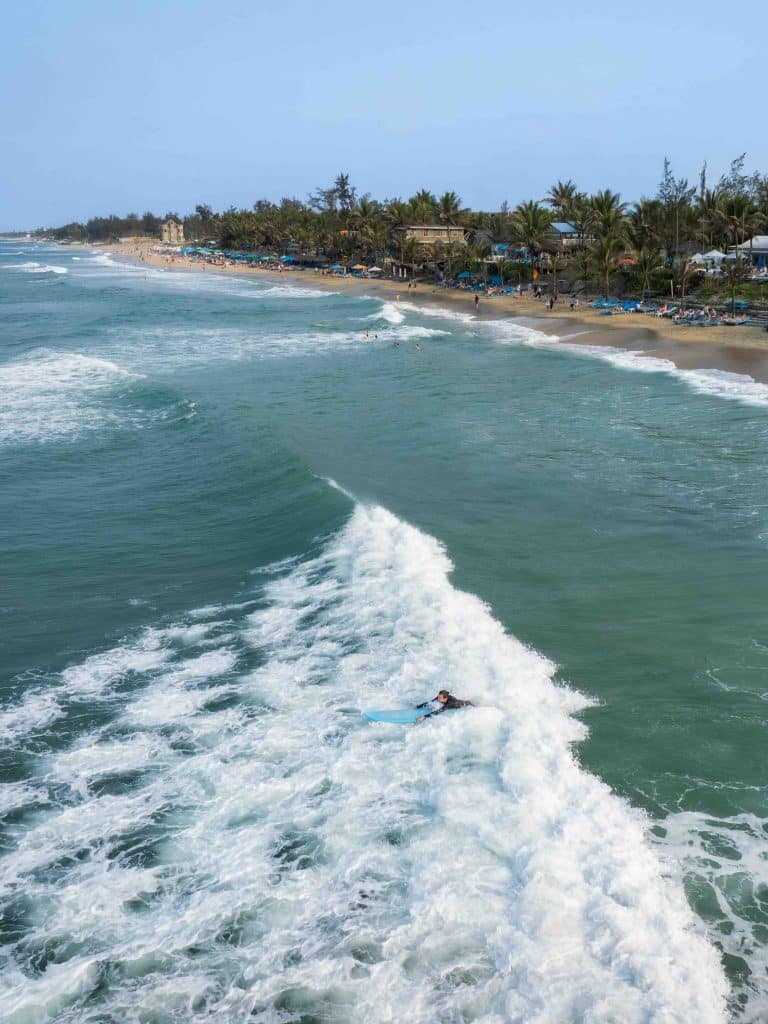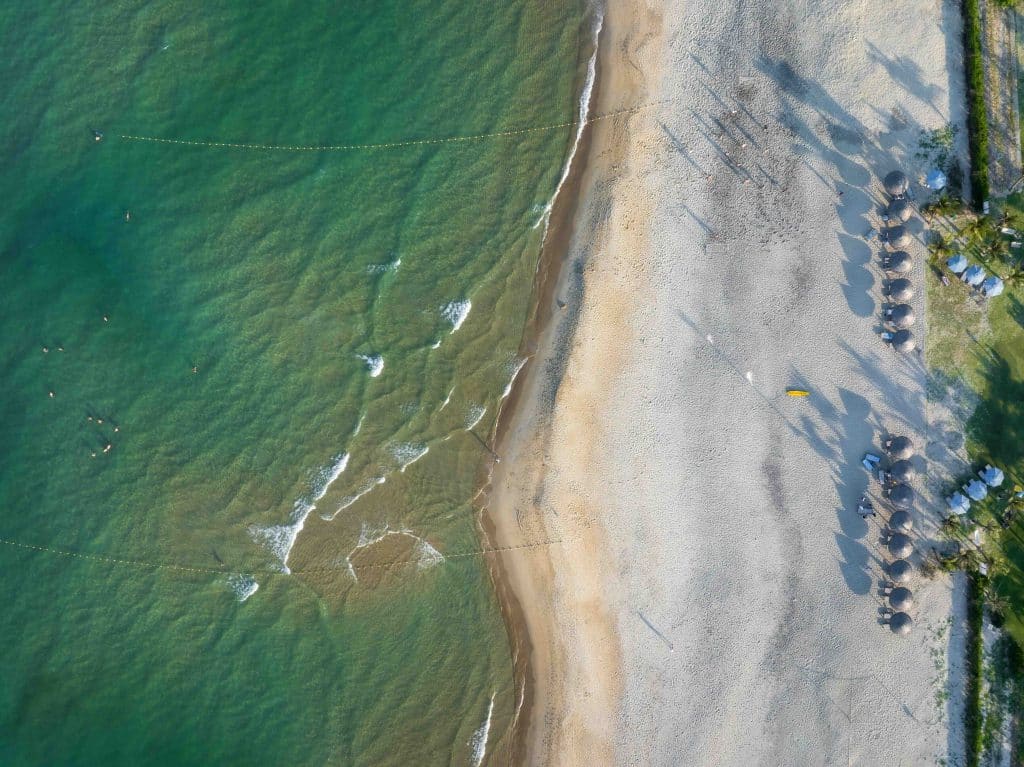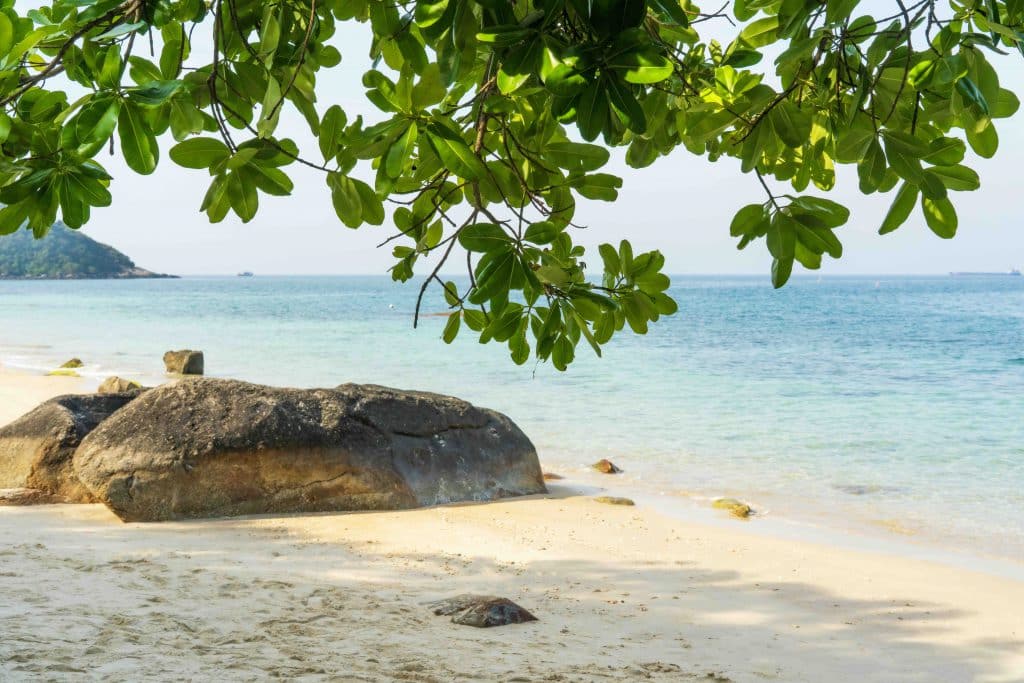Story: Van Anh
Photos: Van Viet
Hoi An moves to the quiet rhythm of a heritage town, its mossy streets steeped in nostalgia. Amid this atmosphere of timeless charm, a new hue is emerging – the color of the sea. The nearby beaches have woven a captivating thread into Quang Nam’s cultural and tourism landscape, linking this historic town with the coastal beauty that surrounds it.

Hoi An’s famous beaches stretch for over 7 kilometers and include Ha My, An Bang, and Cua Dai, each with its own distinct charm. Ranked among Asia’s most beautiful beaches, they have been praised by prestigious international magazines and platforms including CNN and TripAdvisor.
When people think of Hoi An’s beaches, two names immediately come to mind: Cua Dai and An Bang. They stand out thanks to their blend of lively, modern tourism hot spots and the unspoiled beauty of a coastline relatively untouched by development. Along An Bang Beach, simple seafood restaurants sit next to beachfront bars with open, breezy designs that fit naturally into the surroundings. Popular places include The Deck House, Soul Kitchen, and Sound of Silence. Every summer, the area lights up with color, decorated with Vietnamese-inspired details, glowing lanterns, and the soft sounds of acoustic music carried on the sea breeze.
These beachfront bars are a magnet for visitors, especially international travelers. Just off the beach, also in the An Bang area, many homestays feature distinctive architecture that’s free-spirited yet deeply rooted in local culture. Small houses are tucked behind rows of coconut palms and paths are lined with bougainvillea, opening into peaceful spaces to form a miniature seaside village. There is no need for extravagance. The charm of these homestays lies in their simple yet thoughtful details: a rattan chair on a shady porch, a cozy little kitchen where guests can prepare their own meals, or a sunlit courtyard perfect for a quiet afternoon tea.

While An Bang exudes a bohemian, approachable charm, Cua Dai wears a more elegant appearance, home to many larger resorts. Cua Dai is ideal for those seeking relaxation and a wide range of premium personalized services.
In contrast to the vibrant atmosphere of Cua Dai and An Bang, Ha My Beach, located about 6.5 kilometers from the center of Hoi An’s Ancient Town, offers a completely different experience. Often compared to a newly awoken Sleeping Beauty, Ha My has a simple yet graceful beauty and its own quiet charm. It offers the same familiar scene of blue sea and white sand but the atmosphere is remarkably peaceful, a perfect retreat for travelers wishing to escape the noise and bustle of urban life.

A true gem in Hoi An’s marine ecosystem is Cu Lao Cham, a cluster of islands located about 15 kilometers from Hoi An. UNESCO recognized it as a World Biosphere Reserve in 2009 for its outstanding natural resources and rich cultural heritage. Visiting Cu Lao Cham feels like returning to pure nature. There’s no plastic waste or plastic bags, only the vibrant green of the hills and forests and the blue sea. The main island welcomes visitors with crystal-clear emerald water and the warm, sincere smiles of local fishermen. Travelers can bathe in the refreshing sea, take tours to view stunning coral reefs, explore the island’s diverse ecosystems, “walk” under the ocean, kayak along the coast, or camp on the beach under a starlit sky. Perhaps the beauty of Cu Lao Cham is best captured through a simple sunrise bike ride, chasing the first light, with a lush primary forest full of chirping birds on one side and the murmuring waves of the sea on the other.
What makes Cu Lao Cham especially precious is that despite a surging rise of tourism, Hoi An’s authorities and residents have remained steadfast in their efforts to protect the marine ecosystem through practical actions like banning plastic bags on the island, reducing plastic waste, conserving sea turtles, and restoring and cultivating coral reefs. Here, conservation is not simply a slogan but has become a collective commitment and way of life.
The seas of Hoi An captivate visitors with their breathtaking beauty and a rhythm of life that speaks deeply to those who love and respect nature.










